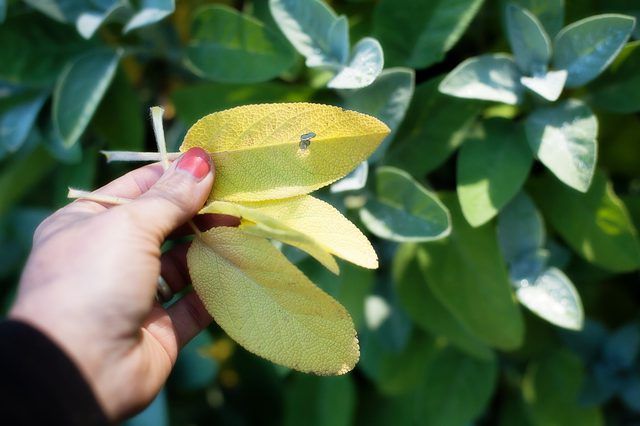Bulbs
Flower Basics
Flower Beds & Specialty Gardens
Flower Garden
Garden Furniture
Garden Gnomes
Garden Seeds
Garden Sheds
Garden Statues
Garden Tools & Supplies
Gardening Basics
Green & Organic
Groundcovers & Vines
Growing Annuals
Growing Basil
Growing Beans
Growing Berries
Growing Blueberries
Growing Cactus
Growing Corn
Growing Cotton
Growing Edibles
Growing Flowers
Growing Garlic
Growing Grapes
Growing Grass
Growing Herbs
Growing Jasmine
Growing Mint
Growing Mushrooms
Orchids
Growing Peanuts
Growing Perennials
Growing Plants
Growing Rosemary
Growing Roses
Growing Strawberries
Growing Sunflowers
Growing Thyme
Growing Tomatoes
Growing Tulips
Growing Vegetables
Herb Basics
Herb Garden
Indoor Growing
Landscaping Basics
Landscaping Patios
Landscaping Plants
Landscaping Shrubs
Landscaping Trees
Landscaping Walks & Pathways
Lawn Basics
Lawn Maintenance
Lawn Mowers
Lawn Ornaments
Lawn Planting
Lawn Tools
Outdoor Growing
Overall Landscape Planning
Pests, Weeds & Problems
Plant Basics
Rock Garden
Rose Garden
Shrubs
Soil
Specialty Gardens
Trees
Vegetable Garden
Yard Maintenance
How to Prune Salvia
How to Prune Salvia. Salvia (Salvia spp.), commonly known as sage, is a plant group that ranges from annuals to woody perennials hardy from U.S. Department of Agriculture plant hardiness zones 4 through 11. Many varieties are used for cooking and present fragrant ornamental foliage. Aromatic blooms range from white to shades of pink, red or...
Salvia (Salvia spp.), commonly known as sage, is a plant group that ranges from annuals to woody perennials hardy from U.S. Department of Agriculture plant hardiness zones 4 through 11. Many varieties are used for cooking and present fragrant ornamental foliage. Aromatic blooms range from white to shades of pink, red or purple-blue. Sages may flower from spring through fall, or deliver seasonal flushes of color. Perennial sages often develop old, woody stems and require pruning to stay attractive. This cleans up the plant and elicits a second burst of blooms and growth. If your sage looks a little listless, a haircut may be all it needs.
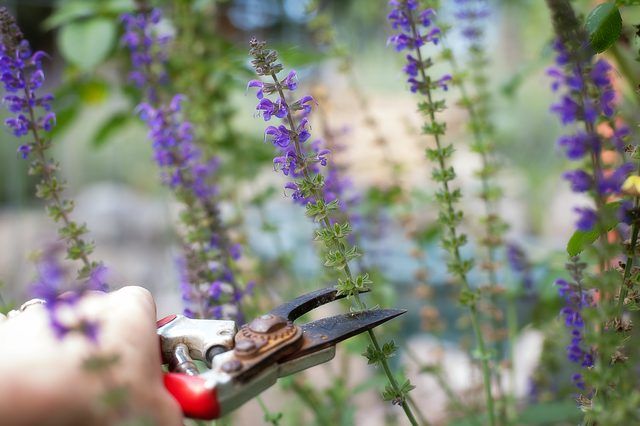
Things You'll Need
Sharp, bypass pruning shears
Garden scissors
Household disinfectant
Gardening gloves
Step 1
Sterilize your pruning implements with household disinfectant before and after your prune your sage to prevent the spread of disease. Use sharp, bypass pruning shears for clean, healthy cuts on woody stems. Garden scissors shape up soft annual and perennials stems. Wear gloves to protect your hands.
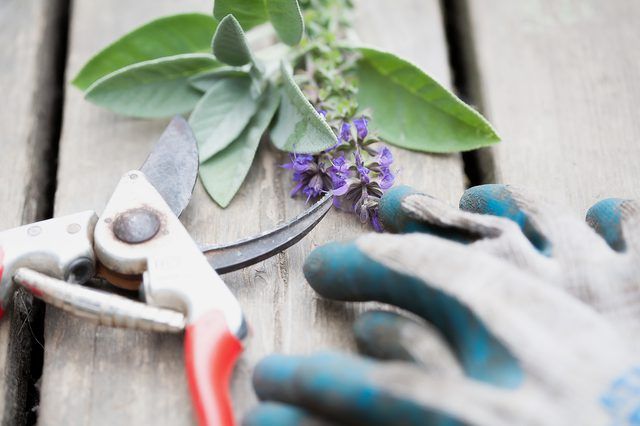
Step 2
Prune off dead and damaged sage stems any time of year, but leave most stems until spring when the plant begins to grow again and danger of frost has passed. The old stems, though unsightly, protect new growth. When new shoots emerge at the plant's the base and on stems, cut old woody stems back to new growth. Cut dead, soft stems to the ground.
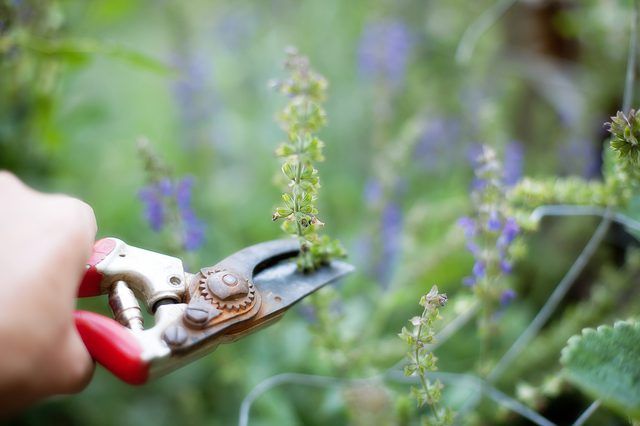
Step 3
Trim soft-stemmed perennial sages in the summer to encourage re-blooming. Wait until after the first burst of blooms, then remove at least half of the plant. If you have a mass planting of sage, cut plants at different levels to keep a natural look. The plants will reward you by bouncing back quickly with renewed vigor and lots of blossoms.
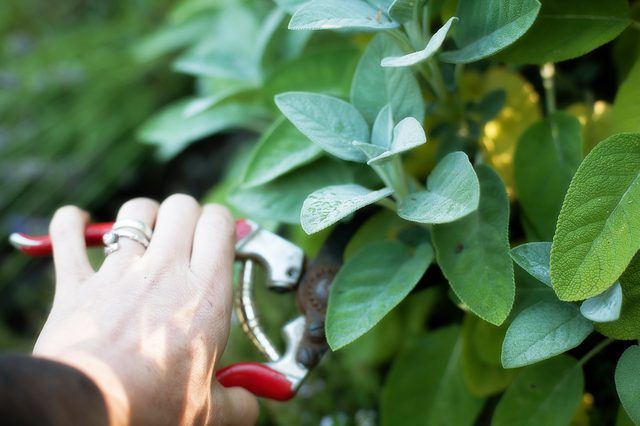
Step 4
Deadhead sage to remove old flower spikes throughout the growing season. This helps encourage more blooms, shape the plant and neaten its appearance. Hold the end of a spent flower spike and move down with your other hand until just below the bloom. This method prevents you from chopping off a stalk you don't want to cut.
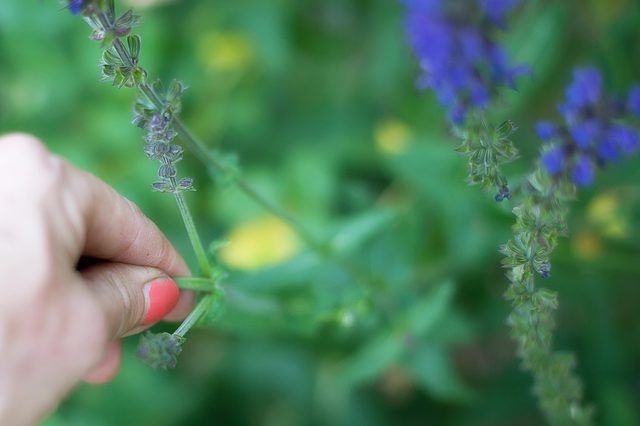
Step 5
Pick up all fallen leaves, spent flower heads and pruned stems around your sage. If there is any sign of disease, dispose of the debris instead of composting it. This reduces the chances of fungal infections spreading. Always check for signs of pests, but sages have few problems with insects.
